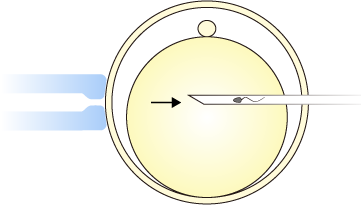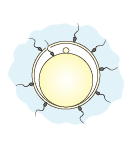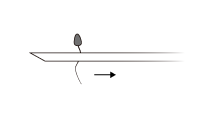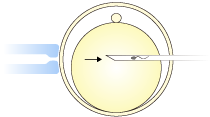There are two methods of in vitro fertilization (IVF).
Conventional IVF

Fertilize the egg by sprinkling it with a moderately adjusted concentration
of sperm.
For in vitro fertilization(IVF), there is the standard method called Conventional IVF where it is allowed to fertilize by sprinkling the oocyte with a moderately adjusted concentration of sperm, and there is micro-insemination(ICSI), in which a very slim needle is used and 1 sperm is placed directly within the oocyte cell underneath a microscope.
Basic information about IVF is posted
here.
This is the method of allowing the oocyte to fertilize by sprinkling sperm on the oocyte.
In the cases of fallopian tubal infertility, male infertility, anti-sperm anti-body, or when you can’t get pregnant by standard infertility treatments, or it is a case of the age factor, this will become the adaptation.

Cells called granulose cells(cumulus cells) are attached to the surroundings of the oocyte collected.
This is called the “cumulus cell oocyte complex”(COC).
For IVF, we will sprinkle an adjusted concentration of sperm on the COC(this is called, “amphipathic”).
Then, many sperm will gather around the COC, and from the head hyaluronidaze will be released and will melt the granulose cell.
After that, the sperm will pass through the “shell”(transparent body) of the oocyte within the granulose cell, fuse with it and fertilization is complete.
This is the method of injecting sperm into the oocyte by the use of a needle underneath a microscope.
The official name is the IntraCytoplasmic Sperm Injection Method(ICSI).
They are the cases of severe male infertility(can not achieve an adequate number of motile sperm with conventional IVF), and fertilization failure(will not fertilize with IVF).















